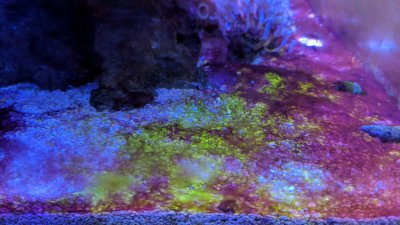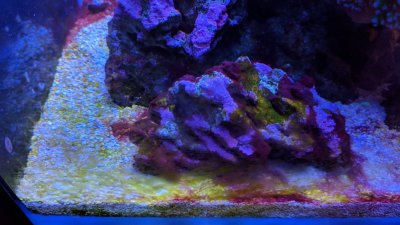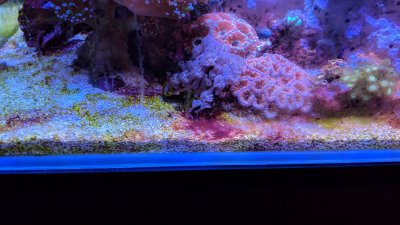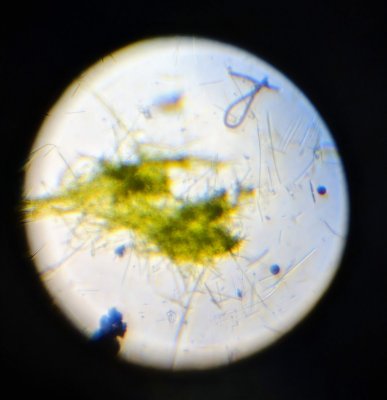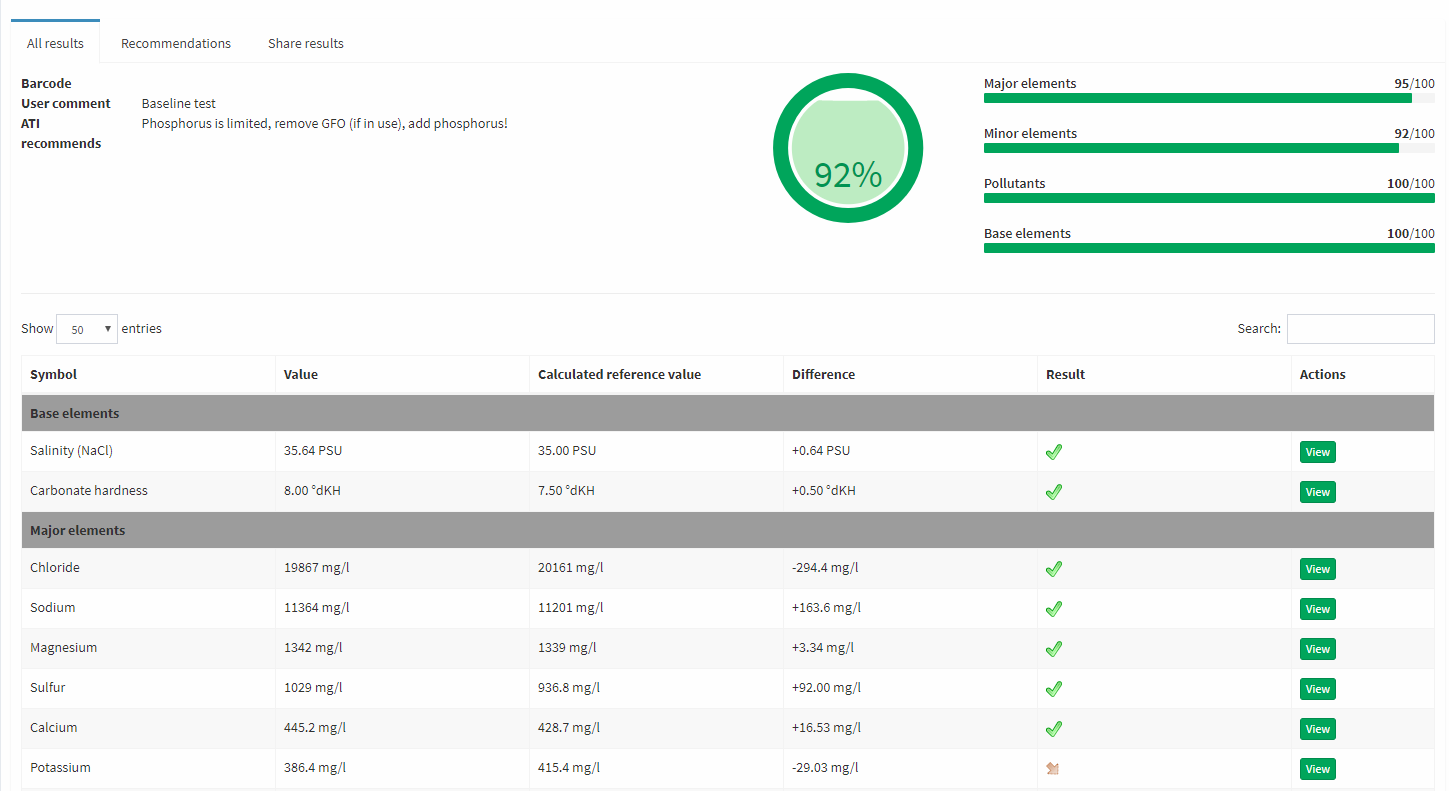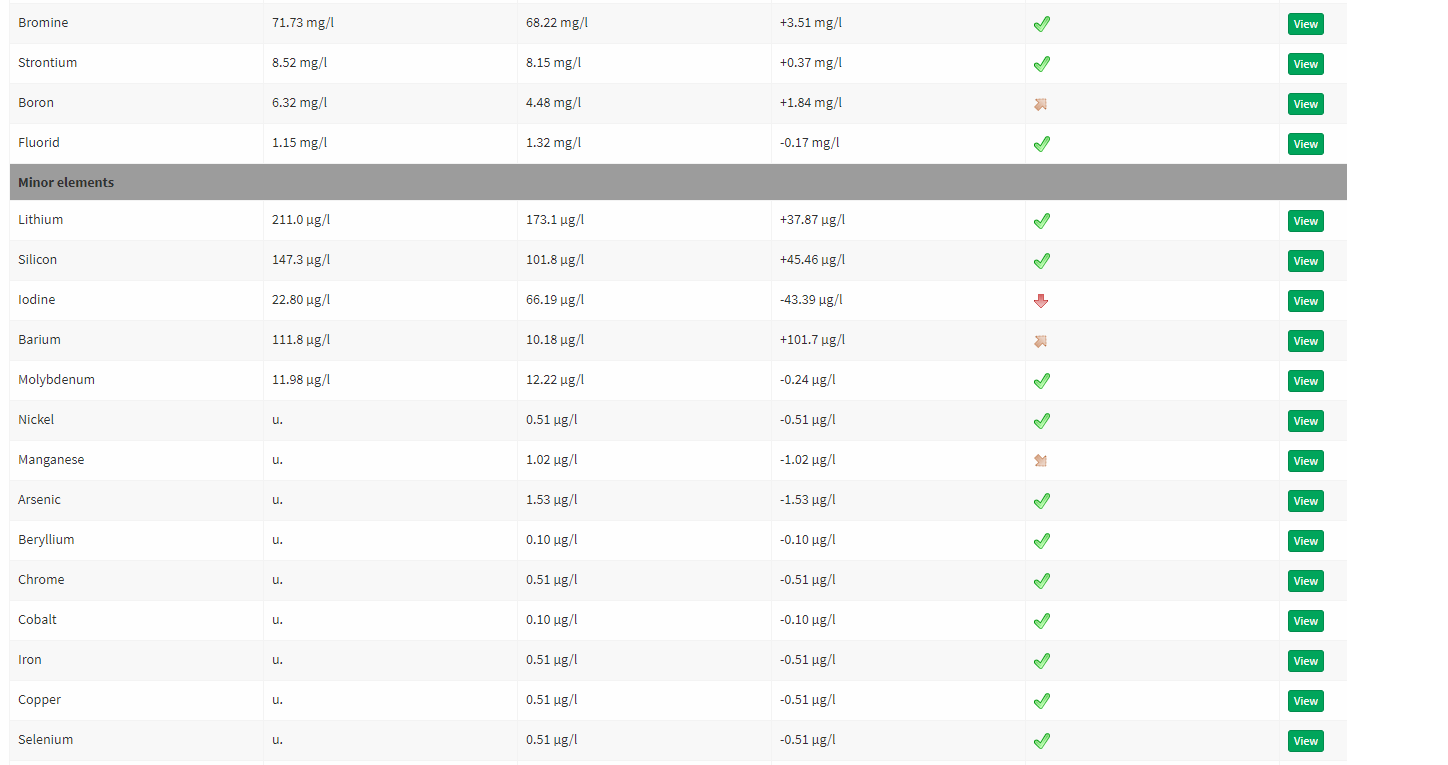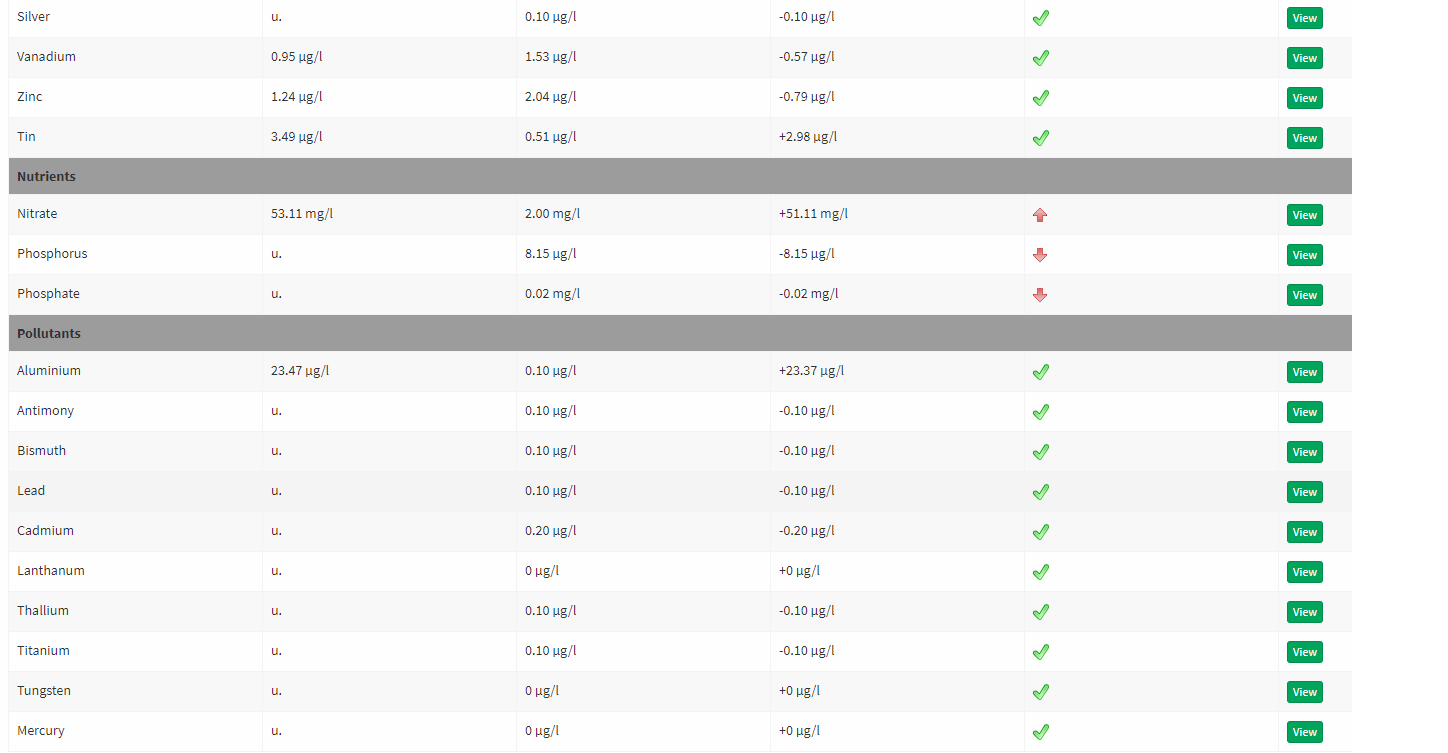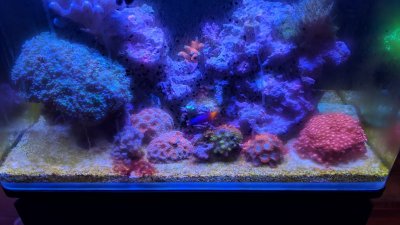Ok so I finally got my results back from ATI ICP testing
Wow, those are really problematic! Have to get your nitrate down, but your phosphorus is already dangerously low. All biological methods of nitrate reduction are going to have less than maximal results while simultaneously driving phosphorus right back to zero (without supplemention). What you're doing will work in the long run, but it's a tricky balancing act to get there and one false move could cause either coral bleaching/death or recurrent algae growth. In addition to what you're doing, I think I'd be doing frequent small water changes at this point. A series of water changes will give you maximum absolute numerical benefit for reducing nitrate because your nitrate is high, while simultaneously having much less important effect on your phosphate level which is already low.
Aluminum is almost certainly from phosguard or equivalent, as you say. I wouldn't dose any other elements right now, with those numbers. For example i think that iodine is ok; any detectable iodine is enough, and it's easy to overdose with supplements. I also wouldn't dose iron now; it encourages algae growth and rapidly vanishes from the water column anyway.






